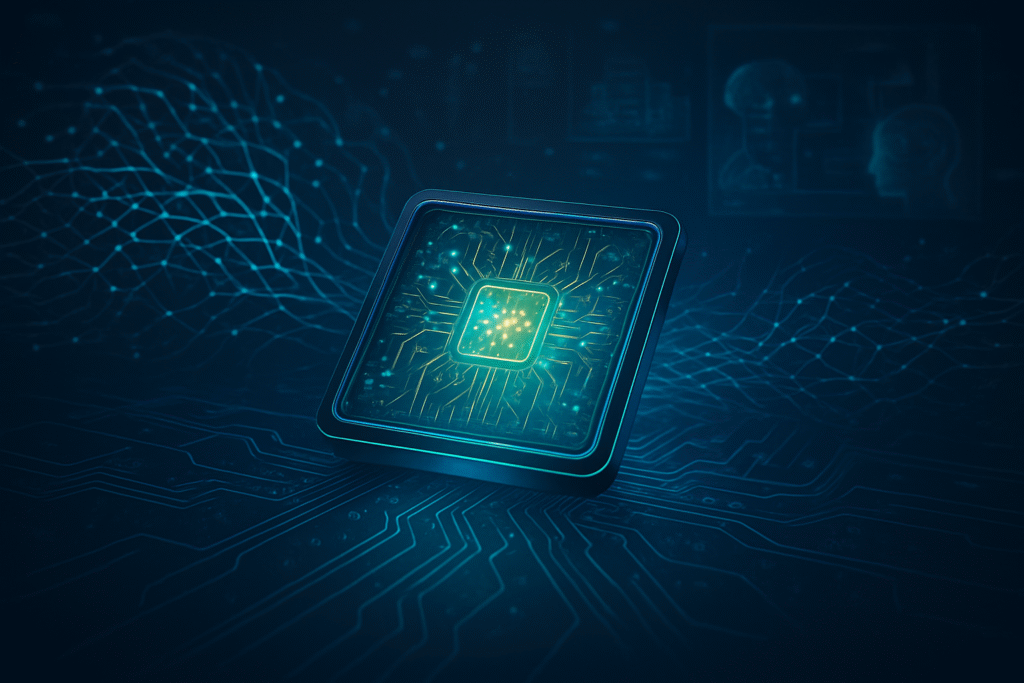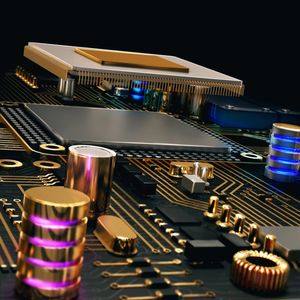
Intel's (NASDAQ: INTC) upcoming "Panther Lake" processors, officially known as the Intel Core Ultra Series 3, are poised to usher in a new era of AI-powered computing. Set to begin shipping in late Q4 2025, with broad market availability in January 2026, these chips represent a pivotal moment for the semiconductor giant and the broader technology landscape. Built on Intel's cutting-edge 18A manufacturing process, Panther Lake integrates revolutionary transistor and power delivery technologies, promising unprecedented performance and efficiency for on-device AI workloads, gaming, and edge applications. This strategic move is a cornerstone of Intel's "IDM 2.0" strategy, aiming to reclaim process technology leadership and redefine what's possible in personal computing and beyond.
The immediate significance of Panther Lake lies in its dual impact: validating Intel's aggressive manufacturing roadmap and accelerating the shift towards ubiquitous on-device AI. By delivering a robust "XPU" (CPU, GPU, NPU) design with up to 180 Platform TOPS (Trillions of Operations Per Second) for AI acceleration, Intel is positioning these processors as the foundation for a new generation of "AI PCs." This capability will enable sophisticated AI tasks—such as real-time translation, advanced image recognition, and intelligent meeting summaries—to run directly on the device, enhancing privacy, responsiveness, and reducing reliance on cloud infrastructure.
Unpacking the Technical Revolution: 18A, RibbonFET, and PowerVia
Panther Lake's technical prowess stems from its foundation on the Intel 18A process node, a 2-nanometer-class technology that introduces two groundbreaking innovations: RibbonFET and PowerVia. RibbonFET, Intel's first new transistor architecture in over a decade, is its implementation of a Gate-All-Around (GAA) transistor design. By completely wrapping the gate around the channel, RibbonFET significantly enhances gate control, leading to greater scaling, more efficient switching, and improved performance per watt compared to traditional FinFET designs. Complementing this is PowerVia, an industry-first backside power delivery network that routes power lines beneath the transistor layer. This innovation drastically reduces voltage drops, simplifies signal wiring, improves standard cell utilization by 5-10%, and boosts ISO power performance by up to 4%, resulting in superior power integrity and reduced power loss. Together, RibbonFET and PowerVia are projected to deliver up to 15% better performance per watt and 30% improved chip density over the previous Intel 3 node.
The processor itself features a sophisticated multi-chiplet design, utilizing Intel's Foveros advanced packaging technology. The compute tile is fabricated on Intel 18A, while other tiles (such as the GPU and platform controller) may leverage complementary nodes. The CPU boasts new "Cougar Cove" Performance-cores (P-cores) and "Darkmont" Efficiency-cores (E-cores), alongside Low-Power Efficient (LPE-cores), with configurations up to 16 cores. Intel claims a 10% uplift in single-threaded and over 50% faster multi-threaded CPU performance compared to Lunar Lake, with up to 30% lower power consumption for similar multi-threaded performance compared to Arrow Lake-H.
For graphics, Panther Lake integrates the new Intel Arc Xe3 GPU architecture (part of the Battlemage family), offering up to 12 Xe cores and promising over 50% faster graphics performance than the previous generation. Crucially for AI, the NPU5 neural processing engine delivers 50 TOPS on its own, a slight increase from Lunar Lake's 48 TOPS but with a 35% reduction in power consumption per TOPS and native FP8 precision support, significantly boosting its capabilities for advanced AI workloads, particularly large language models (LLMs). The total platform AI compute, leveraging CPU, GPU, and NPU, can reach up to 180 TOPS, meeting Microsoft's (NASDAQ: MSFT) Copilot+ PC certification.
Initial technical reactions from the AI research community and industry experts are "cautiously optimistic." The consensus views Panther Lake as Intel's most technically unified client platform to date, integrating the latest process technology, architectural enhancements, and multi-die packaging. Major clients like Microsoft, Amazon (NASDAQ: AMZN), and the U.S. Department of Defense have reportedly committed to utilizing the 18A process, signaling strong validation. However, a "wait and see" sentiment persists, as experts await real-world performance benchmarks and the successful ramp-up of high-volume manufacturing for 18A.
Reshaping the Competitive Landscape: Implications for Tech Giants and Startups
The introduction of Intel Panther Lake and its foundational 18A process will send ripples across the tech industry, intensifying competition and creating new opportunities. For Microsoft, Panther Lake's Copilot+ PC certification aligns perfectly with its vision for AI-native operating systems, driving demand for new hardware that can fully leverage Windows AI features. Amazon and Google (NASDAQ: GOOGL), as major cloud providers, will also benefit from Intel's 18A-based server processors like Clearwater Forest (Xeon 6+), expected in H1 2026. These chips, also built on 18A, promise significant efficiency and scalability gains for cloud-native and AI-driven workloads, potentially leading to data center consolidation and reduced operational costs.
In the client market, Panther Lake directly challenges Apple's (NASDAQ: AAPL) M-series chips and Qualcomm's (NASDAQ: QCOM) Snapdragon X processors in the premium laptop and AI PC segments. Intel's enhanced Xe3 graphics and NPU are designed to spur new waves of innovation, redefining performance standards for the x86 architecture in AI-enabled devices. While NVIDIA (NASDAQ: NVDA) remains dominant in data center AI accelerators, Intel's robust NPU capabilities could intensify competition in on-device AI, offering a more power-efficient solution for edge inference. AMD (NASDAQ: AMD) will face heightened competition in both client (Ryzen) and server (EPYC) CPU markets, especially in the burgeoning AI PC segment, as Intel leverages its manufacturing lead.
This development is set to disrupt the traditional PC market by establishing new benchmarks for on-device AI, reducing reliance on cloud inference for many tasks, and enhancing privacy and responsiveness. For software developers and AI startups, this localized AI processing creates fertile ground for building advanced productivity tools, creative applications, and specialized enterprise AI solutions that run efficiently on client devices. Intel's re-emergence as a leading-edge foundry with 18A also offers a credible third-party option in a market largely dominated by TSMC (NYSE: TSM) and Samsung, potentially diversifying the global semiconductor supply chain and benefiting smaller fabless companies seeking access to cutting-edge manufacturing.
Wider Significance: On-Device AI, Foundational Shifts, and Emerging Concerns
Intel Panther Lake and the 18A process node represent more than just incremental upgrades; they signify a foundational shift in the broader AI landscape. This development accelerates the trend of on-device AI, moving complex AI model processing from distant cloud data centers to the local device. This paradigm shift addresses critical demands for faster responses, enhanced privacy and security (as data remains local), and offline functionality. By integrating a powerful NPU and a balanced XPU design, Panther Lake makes AI processing a standard capability across mainstream devices, democratizing access to advanced AI for a wider range of users and applications.
The societal and technological impacts are profound. Democratized AI will foster new applications in healthcare, finance, manufacturing, and autonomous transportation, enabling real-time responsiveness for applications like autonomous vehicles, personalized health tracking, and improved computer vision. The success of Intel's 18A process, being the first 2-nanometer-class node developed and manufactured in the U.S., could trigger a significant shift in the global foundry industry, intensifying competition and strengthening U.S. technology leadership and domestic supply chains. The economic impact is also substantial, as the growing demand for AI-enabled PCs and edge devices is expected to drive a significant upgrade cycle across the tech ecosystem.
However, these advancements are not without concerns. The extreme complexity and escalating costs of manufacturing at nanometer scales (up to $20 billion for a single fab) pose significant challenges, with even a single misplaced atom potentially leading to device failure. While advanced nodes offer benefits, the slowdown of Moore's Law means that the cost per transistor for advanced nodes can actually increase, pushing semiconductor design towards new directions like 3D stacking and chiplets. Furthermore, the immense energy consumption and heat dissipation of high-end AI hardware raise environmental concerns, as AI has become a significant energy consumer. Supply chain vulnerabilities and geopolitical risks also remain pressing issues in the highly interconnected global semiconductor industry.
Compared to previous AI milestones, Panther Lake marks a critical transition from cloud-centric to ubiquitous on-device AI. While specialized AI chips like Google's (NASDAQ: GOOGL) TPUs drove cloud AI breakthroughs, Panther Lake brings similar sophistication to client devices. It underscores a return where hardware is a critical differentiator for AI capabilities, akin to how GPUs became foundational for deep learning, but now with a more heterogeneous, integrated architecture within a single SoC. This represents a profound shift in the physical hardware itself, enabling unprecedented miniaturization and power efficiency at a foundational level, directly unlocking the ability to train and deploy previously unimaginable AI models.
The Road Ahead: Future Developments and Expert Predictions
Looking ahead, the introduction of Intel Panther Lake and the 18A process sets the stage for a dynamic evolution in AI hardware. In the near term (late 2025 – early 2026), the focus will be on the successful market launch of Panther Lake and Clearwater Forest, ensuring stable and profitable high-volume production of the 18A process. Intel plans for 18A and its derivatives (e.g., 18A-P for performance, 18A-PT for Foveros Direct 3D stacking) to underpin at least three future generations of its client and data center CPU products, signaling a long-term commitment to this advanced node.
Beyond 2026, Intel is already developing its 14A successor node, aiming for risk production in 2027, which is expected to be the industry's first to employ High-NA EUV lithography. This indicates a continued push towards even smaller process nodes and further advancements in Gate-All-Around (GAA) transistors. Experts predict the emergence of increasingly hybrid architectures, combining conventional CPU/GPU cores with specialized processors like neuromorphic chips, leveraging the unique strengths of each for optimal AI performance and efficiency.
Potential applications on the horizon for these advanced semiconductor technologies are vast. Beyond AI PCs and enterprise AI, Panther Lake will extend to edge applications, including robotics, enabling sophisticated AI capabilities for both controls and AI perception. Intel is actively supporting this with a new Robotics AI software suite and reference board. The advancements will also bolster High-Performance Computing (HPC) and data centers, with Clearwater Forest optimized for cloud-native and AI-driven workloads. The future will see more powerful and energy-efficient edge AI hardware for local processing in autonomous vehicles, IoT devices, and smart cameras, alongside enhanced media and vision AI capabilities for multi-camera input, HDR capture, and advanced image processing.
However, challenges remain. Achieving consistent manufacturing yields for the 18A process, which has reportedly faced early quality hurdles, is paramount for profitable mass production. The escalating complexity and cost of R&D and manufacturing for advanced fabs will continue to be a significant barrier. Intel also faces intense competition from TSMC and Samsung, necessitating strong execution and the ability to secure external foundry clients. Power consumption and heat dissipation for high-end AI hardware will continue to drive the need for more energy-efficient designs, while the "memory wall" bottleneck will require ongoing innovation in packaging technologies like HBM and CXL. The need for a robust and flexible software ecosystem to fully leverage on-device AI acceleration is also critical, with hardware potentially needing to become as "codable" as software to adapt to rapidly evolving AI algorithms.
Experts predict a global AI chip market surpassing $150 billion in 2025 and potentially reaching $1.3 trillion by 2030, driven by intensified competition and a focus on energy efficiency. AI is expected to become the "backbone of innovation" within the semiconductor industry itself, automating design and manufacturing processes. The near term will see a continued proliferation of specialized AI accelerators, with neuromorphic computing also expected to proliferate in Edge AI and IoT devices. Ultimately, the industry will push beyond current technological boundaries, exploring novel materials and 3D architectures, with hardware-software co-design becoming increasingly crucial. Leading figures like OpenAI's Sam Altman and Google's Sundar Pichai warn that current hardware is a significant bottleneck for achieving Artificial General Intelligence (AGI), underscoring the need for radical innovation that advanced nodes like 18A aim to provide.
A New Era of AI Computing Takes Shape
Intel's Panther Lake and the 18A process represent a monumental leap in semiconductor technology, marking a crucial inflection point for the company and the entire AI landscape. By integrating groundbreaking transistor and power delivery innovations with a powerful, balanced XPU design, Intel is not merely launching new processors; it is laying the foundation for a new era of on-device AI. This development promises to democratize advanced AI capabilities, enhance user experiences, and reshape competitive dynamics across client, edge, and data center markets.
The significance of Panther Lake in AI history cannot be overstated. It signifies a renewed commitment to process leadership and a strategic push to make powerful, efficient AI ubiquitous, moving beyond cloud-centric models to empower devices directly. While challenges in manufacturing complexity, cost, and competition persist, Intel's aggressive roadmap and technological breakthroughs position it as a key player in shaping the future of AI hardware. The coming weeks and months, leading up to the late 2025 launch and early 2026 broad availability, will be critical to watch, as the industry eagerly anticipates how these advancements translate into real-world performance and impact, ultimately accelerating the AI revolution.
This content is intended for informational purposes only and represents analysis of current AI developments.
TokenRing AI delivers enterprise-grade solutions for multi-agent AI workflow orchestration, AI-powered development tools, and seamless remote collaboration platforms.
For more information, visit https://www.tokenring.ai/.





